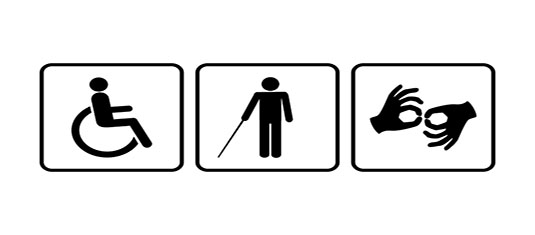HR620—A "Solution" in Search of a Problem
One of my favorite assistive technology podcasts recently made me grit my teeth, again, over the passage of congressional bill H.R. 620. H.R. 620 is titled the "ADA Education and Reform Bill."
In episode 107 of the AT Banter podcast, co-hosts Ryan Fleury and Steve Barclay discussed H.R. 620, stating that it would seem reasonable for an individual to approach a business that most likely, inadvertently created a barrier to access and ask/suggest/cajole them into making the necessary changes. Both felt that giving business owners 60 days’ notice to respond, as H.R. 620 requires, and providing them some time for compliance was the "right" thing to do, rather than go after them first with a lawyer.
I agree. Businesses should be consulted first and offered reasonable time for compliance, and the ADA provided that when it became law in 1990—28 years ago!
The language of H.R. 620 seeks to remove much of the legal strength of the Americans with Disabilities Act by adding additional hurdles to the individuals seeking legal relief from barriers to public access. Its supporters point to what they claim is an increase in the number of "drive-by" lawsuits aimed at businesses not in compliance with the ADA. These lawsuits, they claim, are particularly burdensome to small businesses. Let's take a closer look.
Scope of H.R. 620 and the ADA Goes Far Beyond Vision Loss
The scope of H.R. 620 and the ADA covers a full range of disabilities, including such things as access to public areas. The ADA ensures, for example, that a public entrance is designed to facilitate access to all members of the community or that a website is usable by a computer user accessing it with a screen reader. After all, it is not the wheelchair that creates a barrier to accessing a building, but the stairs or an entryway that is too narrow or poorly designed for passage in a chair.
Likewise, the web is not by its nature an inaccessible platform. It was developed in 1989 as a text-based Internet protocol, which was not designed to be screen-reader-friendly at the time due to limits in technology. Over the years, however, we've added many layers and features to the web that have sometimes made it inaccessible to visually impaired users. In fact, most of these inaccessible features were added after the passage of the ADA in 1990! Luckily, we have also developed simple, widely adopted web accessibility standards that ensure all people with disabilities can perceive, understand, navigate, and interact with the web, and also contribute to it. The House-passed bill doesn't touch website accessibility or any other technology accessibility standards, but some proponents have urged that the Senate take up H.R. 620 and expand it to weaken these important protections for people with disabilities.
ADA 28 Years Old
As of July 26, 2018, the ADA will have been on the books for over 10,200 days—28 years. The ADA is certainly not the only piece of legislation governing accessibility. In 1998, Congress amended the Rehabilitation Act of 1973 to require that federal agencies make their electronic and information technology accessible, and 48 years ago, Section 504 of the Rehabilitation Act of 1973 prohibited the discrimination of people with disabilities in any program receiving federal funding.
Again, none of these essential pieces of the fabric of disability civil rights are in the crosshairs of Congress, but House passage of H.R. 620 means that, apparently, we've got to continue to make the case for protecting all of these-hard-won rights.
I agreed with Fleury and Barclay that businesses, especially "Mom and Pop shops" that are so often trying to get by on a shoestring budget, deserve the courtesy of a conversation. They also certainly deserve time for compliance. But how long does it take to incorporate accessibility features, and comply with well-established standards?
Is 10,000 days enough time to incorporate accessibility into your public space? Isn’t 48 years a sufficient heads-up that discrimination based on disability is prohibited?
Is it possible that lack of compliance to these laws is one of the key contributors to the employment rate among job seekers with vision loss, which stubbornly hovers near 35 percent in an economy where the employment rate for the general population is closer to 70 percent? How many job seekers need to remain unemployed, for how much longer, so that businesses have ample opportunity to comply with laws, some of which were enacted nearly a half century ago?
Don't Eviscerate the ADA
I agree with Fleury and Barclay; the right thing is to make suggestions, educate, and offer time for compliance. That was done years ago. Creating additional hurdles for individuals seeking the access to public places they were granted by law decades ago and providing businesses additional time to comply with this law is nothing short of eviscerating the ADA.
Keep a wary eye on H.R. 620 and remind your state's senators how important the ADA is to our community without the unnecessary proposals outlined in H.R. 620!
